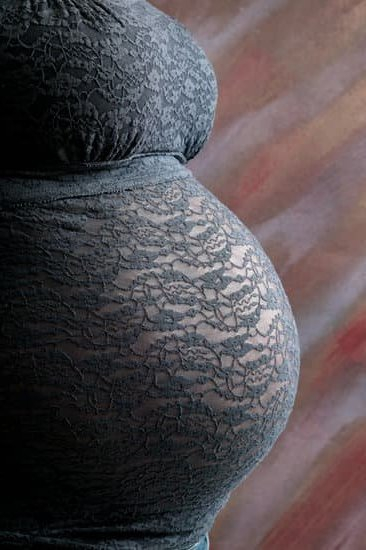Areola breast changes during pregnancy are a natural and common occurrence for expectant mothers. These changes can include variations in size, color, and sensitivity, all of which are attributed to the body’s preparation for breastfeeding. Understanding these changes and how to manage them can help women navigate this phase of their pregnancy with greater ease.
During pregnancy, the body undergoes numerous transformations in preparation for childbirth and postpartum care. One area where these changes are particularly noticeable is in the breasts, specifically the areola. The following sections will explore the anatomy of the areola and breasts, common changes that occur during pregnancy, factors that contribute to these changes, tips for managing discomfort and sensitivity, when to seek medical advice, impact on breastfeeding, and embracing one’s changing body during this special time.
By gaining a deeper understanding of these physiological changes and learning how to embrace and celebrate them, expectant mothers can better prepare themselves for the journey ahead. Whether it’s adjusting to physical discomfort or seeking support from healthcare providers, being informed about areola breast changes during pregnancy can provide women with the knowledge and confidence they need as they navigate this transformative experience.
Understanding the Anatomy of the Areola and Breast
During pregnancy, the body goes through numerous changes, including the breasts and areolas. The areola is the dark area around the nipple, and it plays a crucial role during breastfeeding by providing lubrication and protection for both mother and baby. Understanding the anatomy of the areola and breast can help expectant mothers better prepare for the changes that occur during pregnancy.
Structure of the Areola and Breast
The areola is composed of specialized skin cells, glands, and pigmentation that give it its distinct color and texture. It contains small raised bumps known as Montgomery glands, which secrete an oily substance to keep the areola and nipple lubricated. The breast itself is made up of glandular tissue, connective tissue, and fat. During pregnancy, these structures undergo significant changes to prepare for milk production and breastfeeding.
Role of Hormones
Hormones such as estrogen and progesterone play a key role in preparing the breasts and areolas for breastfeeding. These hormones stimulate growth in the ducts and milk-producing cells within the breast tissue. As a result, blood flow to the breasts increases, causing them to enlarge in size. Additionally, hormonal changes can lead to increased pigmentation in the areolas, making them darker in color.
Changes in Texture
In addition to changes in size and pigmentation, expectant mothers may also notice differences in the texture of their areolas during pregnancy. The Montgomery glands mentioned earlier may become more prominent, leading to a bumpy or pimpled appearance on the surface of the areola. These changes are normal and serve an important function in preparing for lactation after childbirth.
Understanding these anatomical changes can help expectant mothers feel more prepared for the physical transformations that
Common Areola Changes During Pregnancy
During pregnancy, many women experience changes in their areola and breasts. These changes are natural and can vary from person to person. Understanding the common areola changes during pregnancy can help women feel more prepared for the physical transformations that come with carrying a child.
Darkening of the Areola
One of the most common areola changes during pregnancy is the darkening of the areola. This is due to an increase in pigmentation caused by hormonal changes. The areola may become darker and larger, which is the body’s way of preparing for breastfeeding. It is important to note that these changes are temporary and will often fade after childbirth.
Enlargement and Sensitivity
In addition to darkening, many women also experience an increase in the size of their areolas during pregnancy. The breast tissue enlarges as it prepares for milk production, causing the areolas to also expand. Along with this enlargement, some women may experience heightened sensitivity or tenderness in their breasts and nipples. This discomfort is a common part of pregnancy but can be managed with proper support garments and gentle care.
Bumps on the Areola
Another common change that
Understanding these common areola changes during pregnancy can help expectant mothers feel more comfortable with their changing bodies as they prepare for motherhood.
Factors That Contribute to Areola and Breast Changes
During pregnancy, the body goes through numerous changes, including those in the breasts and areolas. These changes are primarily driven by hormonal fluctuations and increased blood flow to the breast tissue. One of the key contributing factors to areola and breast changes during pregnancy is the surge in estrogen and progesterone levels. These hormones play a crucial role in preparing the body for breastfeeding and can lead to visible changes in the size, color, and sensitivity of the areolas.
Another factor that contributes to these changes is an increase in blood flow to the breast tissue. As pregnancy progresses, there is a significant increase in blood volume in the body, which also affects the blood flow to the breasts. This increased blood flow can cause the areolas to darken and become more prominent. Additionally, the hormonal changes also lead to an increase in glandular tissue in the breasts, which can impact their size and shape.
Furthermore, genetics can also play a role in determining the extent of areola and breast changes during pregnancy. Women with a family history of pronounced areola changes or significant breast growth during pregnancy may experience more noticeable alterations compared to others. The combination of genetic factors and hormonal influences can result in a wide range of variations in how each woman’s body responds to pregnancy.
| Factors | Contributions |
|---|---|
| Hormonal Fluctuations | Visible changes in size, color, and sensitivity of areolas. |
| Increased Blood Flow | Darkening and becoming more prominent. |
| Genetics | Family history may influence how each woman’s body responds to pregnancy. |
Tips for Managing Discomfort and Sensitivity
During pregnancy, many women experience changes in their areola and breasts, which can often lead to discomfort and sensitivity. While these changes are a normal part of the body’s preparation for breastfeeding, they can still be challenging to manage. Here are some tips for managing discomfort and sensitivity during this time:
1. Invest in a supportive bra: As your breasts grow and change during pregnancy, it’s important to invest in a supportive and comfortable bra. Look for bras with wide straps, soft fabric, and no underwire to help reduce discomfort.
2. Use soothing creams or lotions: Applying a gentle, fragrance-free cream or lotion to the breasts and areola can help alleviate any itchiness or dryness that may occur during pregnancy. Be sure to choose products that are safe for use during pregnancy.
3. Practice good hygiene: Keeping the breast and areola area clean and dry can help prevent any potential irritation or discomfort. Be sure to wash regularly with a mild soap and pat the area dry gently.
4. Avoid harsh chemicals: During pregnancy, it’s best to avoid exposing your breasts and areola to harsh chemicals found in skincare products, detergents, or other cleaning agents as these can further exacerbate any discomfort or sensitivity.
5. Consider hot or cold therapy: Using warm compresses or ice packs can provide relief for sore breasts and areolas. Experiment with both options to see which one works best for you.
By following these tips and making self-care a priority, you can effectively manage any discomfort or sensitivity that comes with areola breast changes during pregnancy.
When to Seek Medical Advice for Areola and Breast Changes
During pregnancy, it is common for women to experience changes in their areola and breasts. While many of these changes are harmless and a natural part of the body’s preparation for breastfeeding, there are times when seeking medical advice is necessary. Here are some instances when it is important to consult with a healthcare provider regarding areola and breast changes during pregnancy:
1. Unusual or Persistent Pain: It is normal for the breasts to feel tender or sore during pregnancy, but persistent or severe pain in the breasts or areola should be brought to the attention of a healthcare provider. This could be a sign of an underlying issue such as an infection or mastitis.
2. Discharge from the Nipples: If you notice any unusual discharge from your nipples, especially if it is bloody or clear in color, it is essential to seek medical advice. Nipple discharge can sometimes be a sign of hormonal imbalances or other issues that need to be addressed by a healthcare professional.
3. Changes in Skin Texture or Color: While some changes in the skin of the areola and breasts are expected during pregnancy, significant changes in texture, color, or thickness should be reviewed by a doctor. This can include sudden darkening of the skin, redness, rash-like symptoms, or thickening of the skin.
It is important to remember that every woman’s body reacts differently to pregnancy, and while most areola and breast changes are normal, there are instances where seeking medical advice is crucial for ensuring both maternal and fetal health. Healthcare providers can provide guidance and support throughout the pregnancy journey when it comes to understanding and managing changes in the breasts.
Impact of Areola and Breast Changes on Breastfeeding
During pregnancy, the areola and breast undergo many changes in preparation for breastfeeding. The areola, which is the pigmented area around the nipple, may darken and enlarge. This is due to an increase in hormones such as estrogen and progesterone, which stimulate the growth of milk ducts and glandular tissue in the breasts. These changes are essential for the production of breast milk and can have a significant impact on breastfeeding.
One common areola change during pregnancy is the development of Montgomery tubercles, which are small raised bumps on the areola. These sebaceous glands produce an oily substance that helps lubricate and protect the skin around the nipple during breastfeeding. Additionally, the size and shape of the nipples may also change, becoming larger and more prominent. All of these changes play a crucial role in preparing the breasts for lactation and nursing a newborn.
The sensitivity and tenderness of the breasts and nipples, as well as changes in their size and shape can impact a woman’s breastfeeding experience. Some women may find it uncomfortable or painful to breastfeed due to these changes, while others may experience difficulty latching or positioning their baby at the breast. It is important for expectant mothers to be informed about these potential challenges so they can seek support if needed to ensure successful breastfeeding.
| Areola Changes During Pregnancy | Breast Changes During Pregnancy |
|---|---|
| Darkening and enlargement | Increased hormone levels stimulate growth of milk ducts |
| Development of Montgomery tubercles | Larger and more prominent nipples |
| Sensitivity and tenderness | Changes in size and shape impacting breastfeeding |
Embracing and Celebrating Your Changing Body During Pregnancy
In conclusion, the changes that occur in the areola and breasts during pregnancy are a natural and normal part of the body’s preparation for breastfeeding. It is important for women to understand that these changes, including darkening of the areola, nipple sensitivity, and increased size of the breasts, are all common occurrences during pregnancy. While these changes may bring discomfort or sensitivity, there are various ways to manage and ease any associated discomfort.
It is crucial for women to remember that their changing bodies are a beautiful and natural part of the pregnancy journey. Embracing and celebrating these changes can lead to a positive and empowered experience. The support of healthcare providers and loved ones can also play a significant role in helping women navigate through these changes with confidence.
Furthermore, it is essential for women to seek medical advice if they experience extreme pain, unusual discharge from the nipples, or any other concerning symptoms related to their areola and breast changes during pregnancy. With proper care and attention, women can go on to have a fulfilling breastfeeding experience after giving birth. Overall, it’s important for women to recognize that their changing bodies during pregnancy should be embraced as an integral part of this transformative time in their lives.
Frequently Asked Questions
How Early in Pregnancy Do Areolas Change?
Areolas can start to change as early as the first few weeks of pregnancy. They may darken in color, become larger, and develop small bumps called Montgomery’s tubercles.
What Do Pregnancy Areolas Look Like?
Pregnancy areolas can vary in appearance, but common changes include darkening in color to shades of brown or black, enlargement in size, and the appearance of small raised bumps on the surface.
At What Stage of Pregnancy Do Breasts Start Hurting?
Breast tenderness and soreness can begin as early as the first trimester of pregnancy, typically around 4-6 weeks. This is due to hormonal changes and increased blood flow to the breasts in preparation for breastfeeding.

Welcome to my fertility blog. This is a space where I will be sharing my experiences as I navigate through the world of fertility treatments, as well as provide information and resources about fertility and pregnancy.





